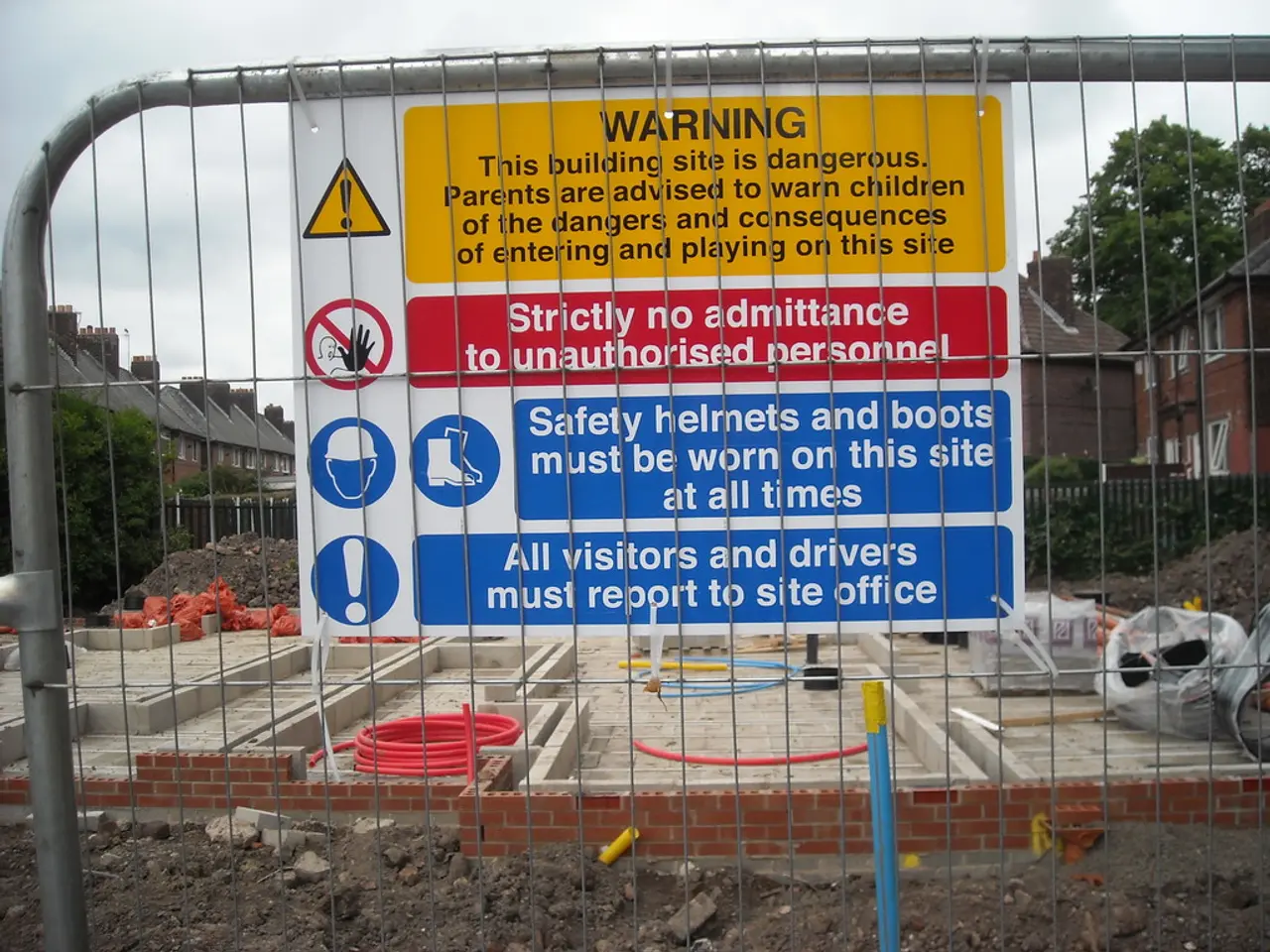It's advisable to check the radon levels in the soil before commencing construction projects.
In the construction of a new home, it's essential to consider the installation of radon-resistant features. This proactive approach offers numerous advantages, making it more cost-effective, easier, and more reliable to prevent radon entry during construction rather than after the house is built and tested.
One key reason for this approach is cost efficiency and ease of installation. Incorporating radon-resistant features such as vapor barriers, radon-proof membranes under the slab, sealed cracks, and passive vent pipe systems during construction is less expensive and simpler than retrofitting these measures into an existing home. This early installation avoids the need for potentially expensive and invasive modifications later.
Another significant advantage is proactive mitigation. Radon gas seeps into homes through cracks and openings in foundations and slabs. Installing barriers, sealants, and vent pipes before building minimizes radon infiltration from the start, reducing health risks without waiting for test results.
Constructing with radon-resistant systems in place also provides a built-in passive system. If testing after construction reveals high radon levels, an active fan can be easily added to existing vent pipes without major structural changes. This design integration and preparedness ensure continuous protection and additional benefits such as improved indoor air quality, reduced mold growth, and lower energy costs.
Sealing concrete and preventing moisture intrusion during construction also help stabilize radon levels and prevent air leakage through cracks. These benefits are best achieved during initial construction, providing preventive measures against potential health risks.
Since radon exposure is linked to lung cancer, preventing its entry during construction is a critical health measure that should not be delayed until after occupancy and testing.
It's important to note that even if soil testing reveals low levels of radon gas in the soil, the amount of radon that may enter the finished house cannot be accurately predicted. Therefore, the cost to perform the soil testing is very high compared to installing the passive radon system in high radon potential areas.
Aesthetics can also be improved by running the radon-resistant system's pipe before the house is finished, and installing the system is easier before the house is completed. Additionally, routing the radon-resistant system's pipe through warm spaces can improve the system's passive operation.
In conclusion, because radon control is cheaper, simpler, and more effective when integrated into the building process, installing radon-resistant features before building a house is strongly recommended over retrofitting after radon testing. The EPA Map of Radon Zones can be used to determine high radon potential areas, making it easier to decide whether a house should be built radon-resistant. However, it's important to remember that a radon test should not be performed until after the home is completed.
Sources:
- Radon-resistant construction: A cost-effective solution for reducing radon in homes
- Radon-resistant construction: A review of the literature
- Radon-resistant construction: A guide for home buyers, sellers, and real estate professionals
- Radon-resistant construction: A guide for builders and contractors
- Radon-resistant construction: A guide for state and local officials
In the realm of home construction, integrating radon-resistant features not only increases energy efficiency and improves indoor air quality, but also reduces the likelihood of costly and invasive retrofits in the future. This practice aligns with a holistic approach to health-and-wellness, a key component of lifestyle, by proactively mitigating the risk of radon exposure, a known cause of lung cancer. Additionally, implementing home-and-garden techniques like sealing concrete and preventing moisture intrusion during construction can aid in stabilizing radon levels and maintaining the overall aesthetic appeal of the property.




